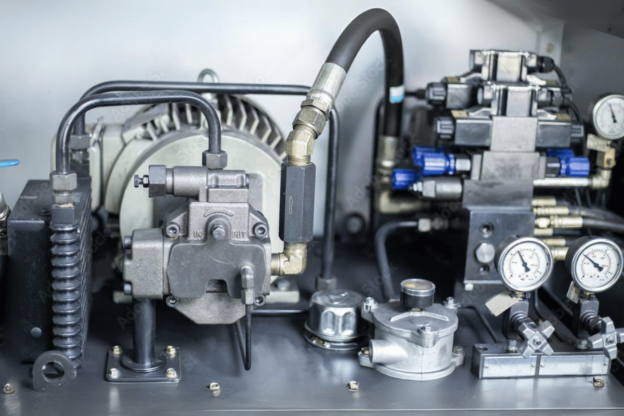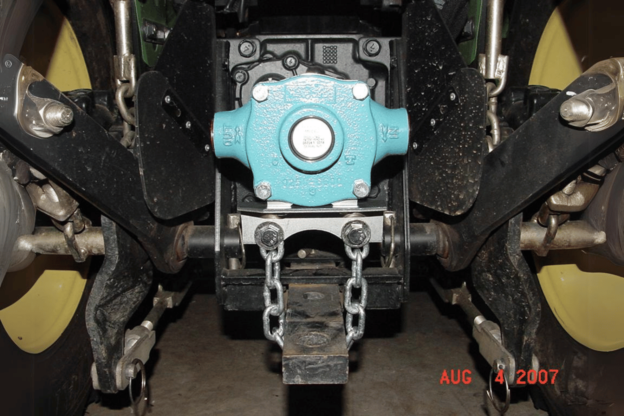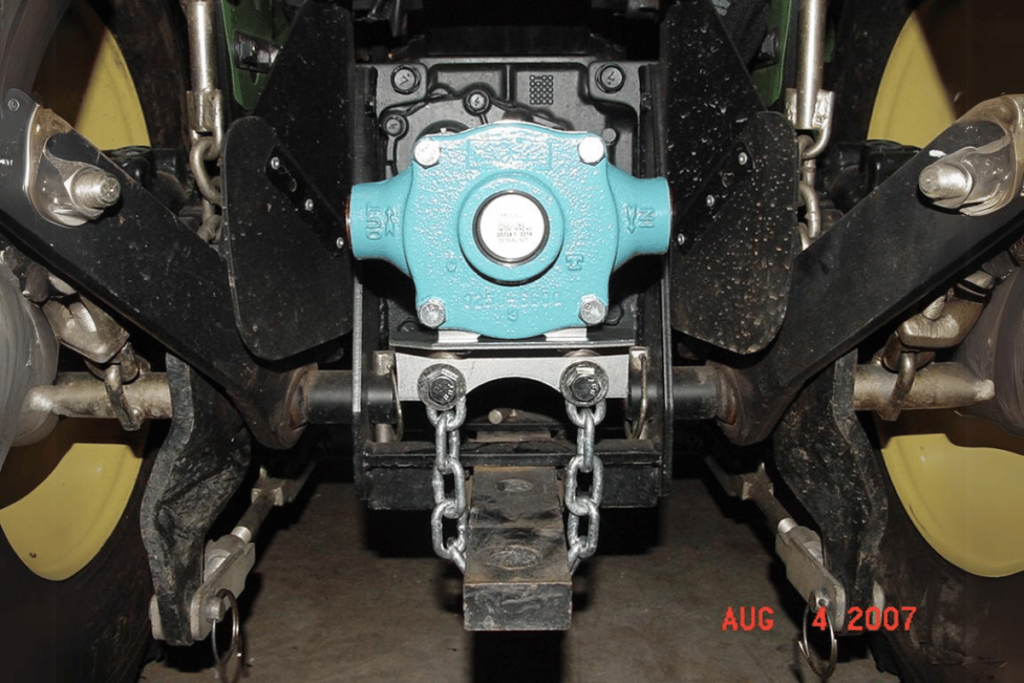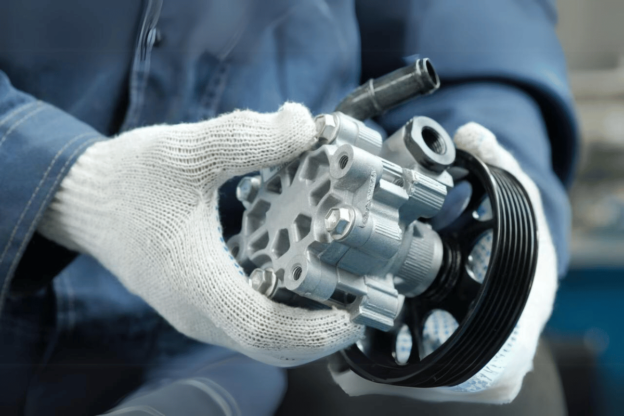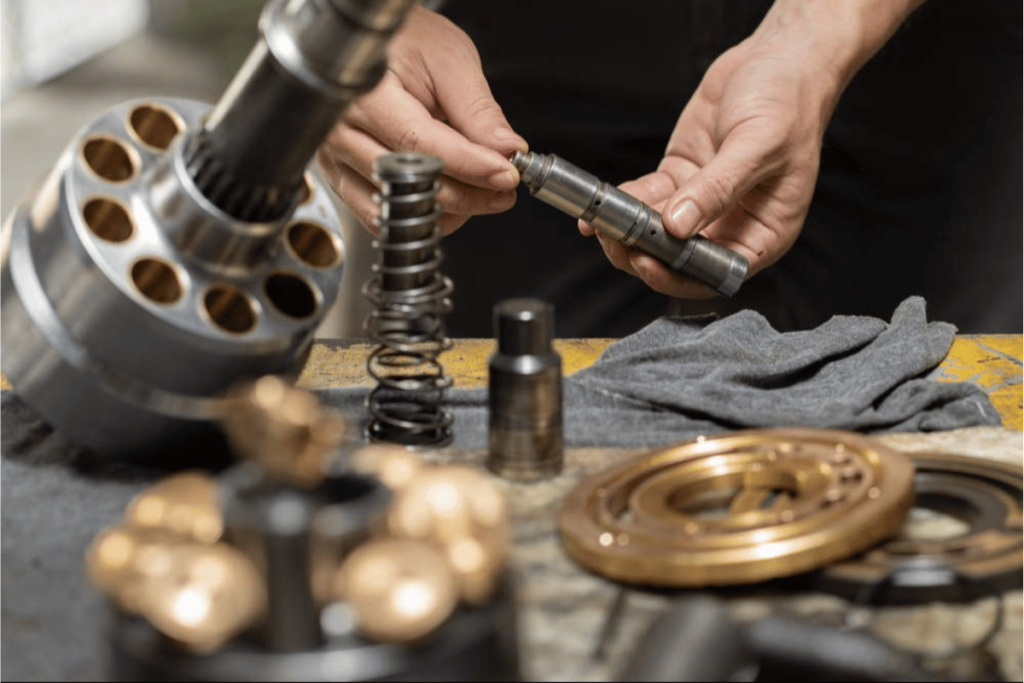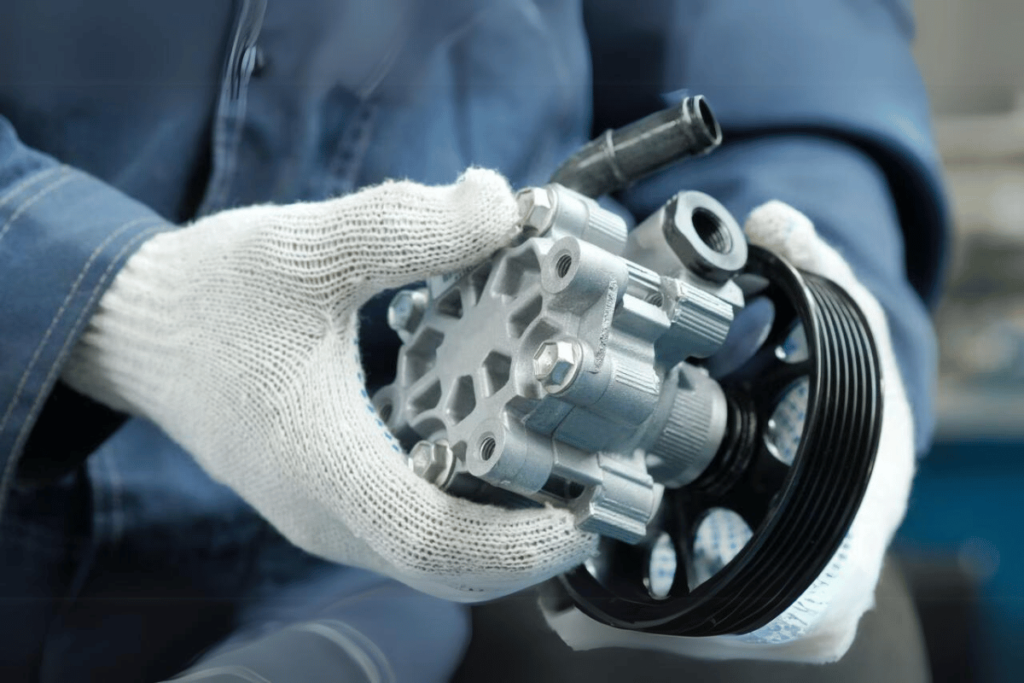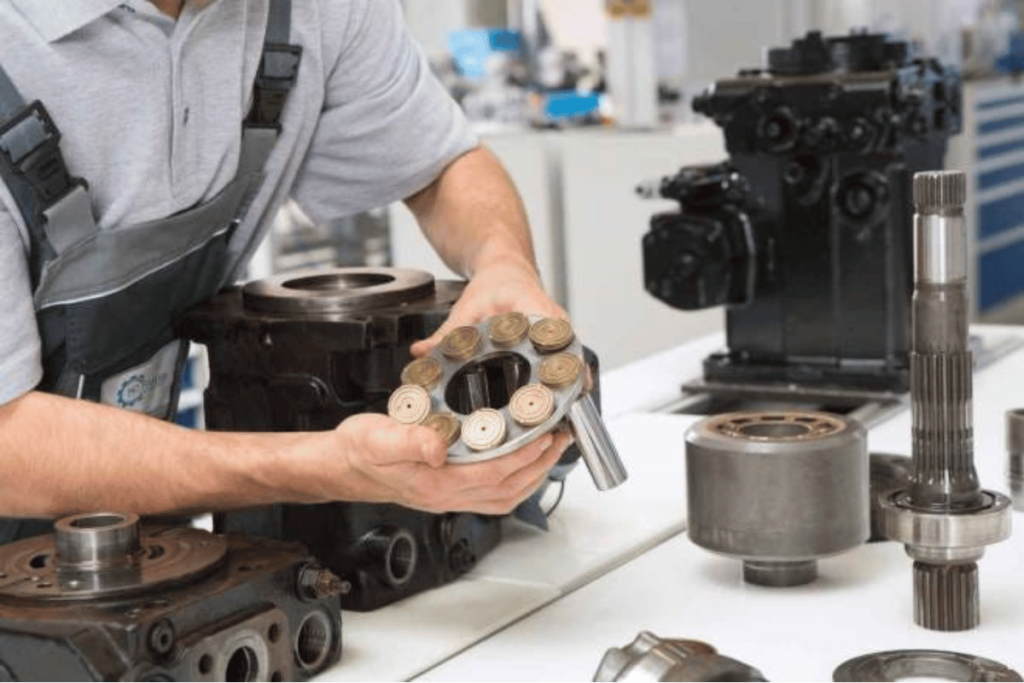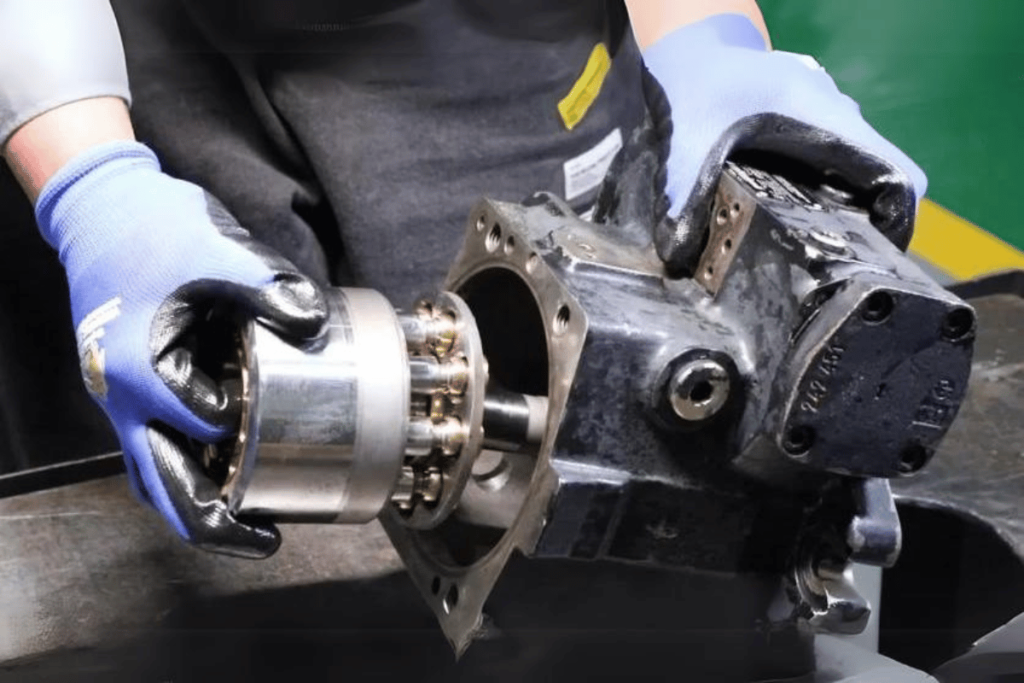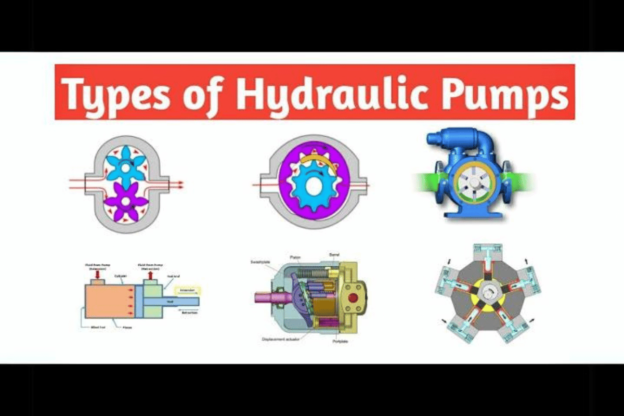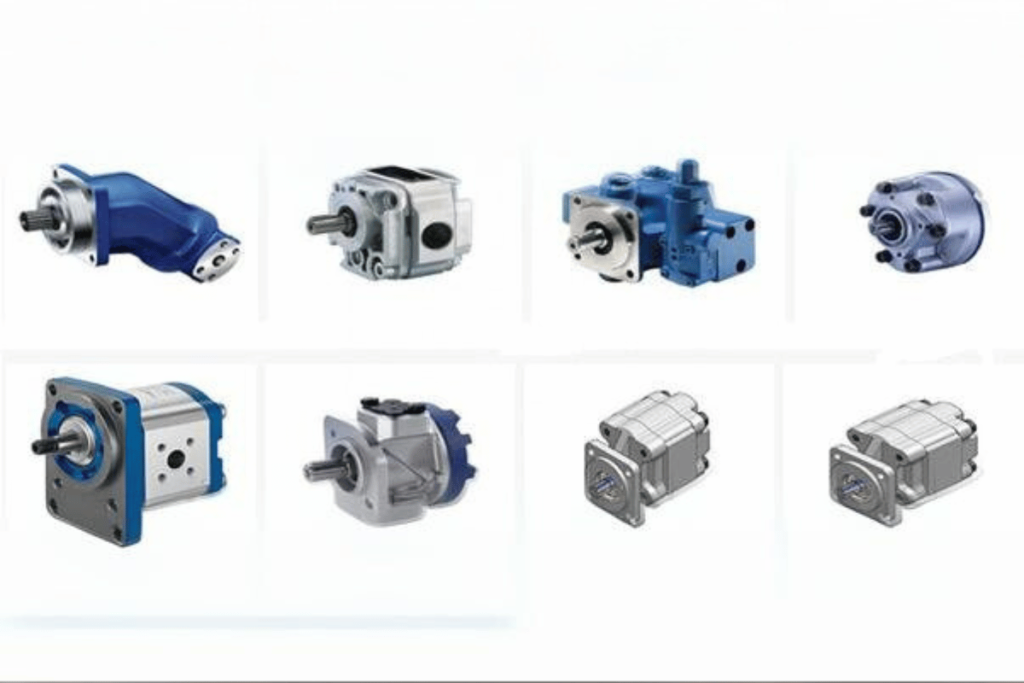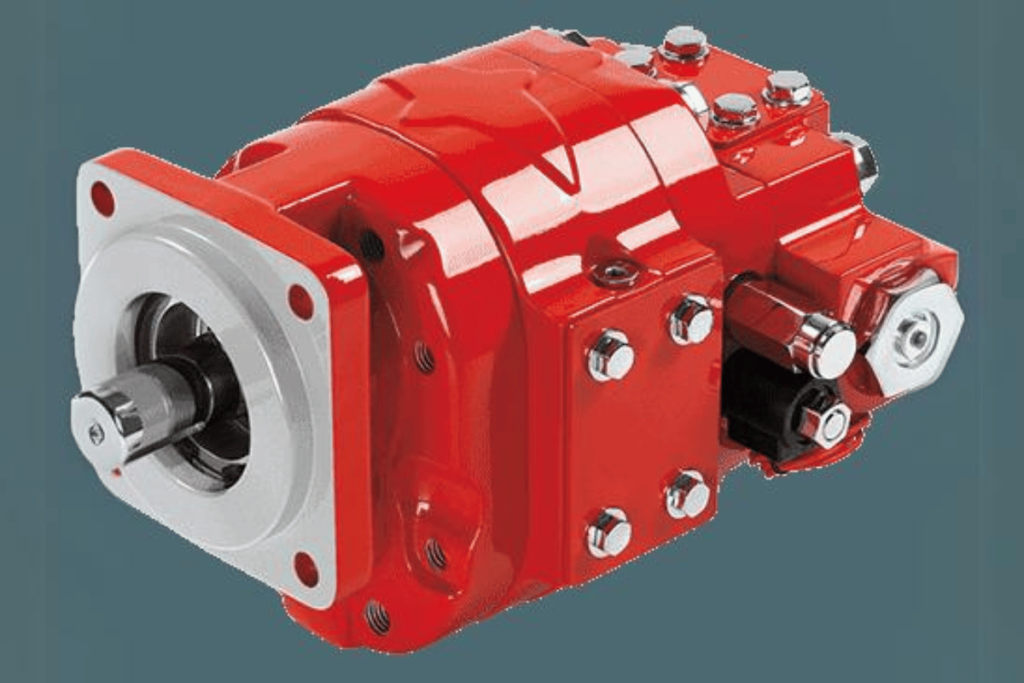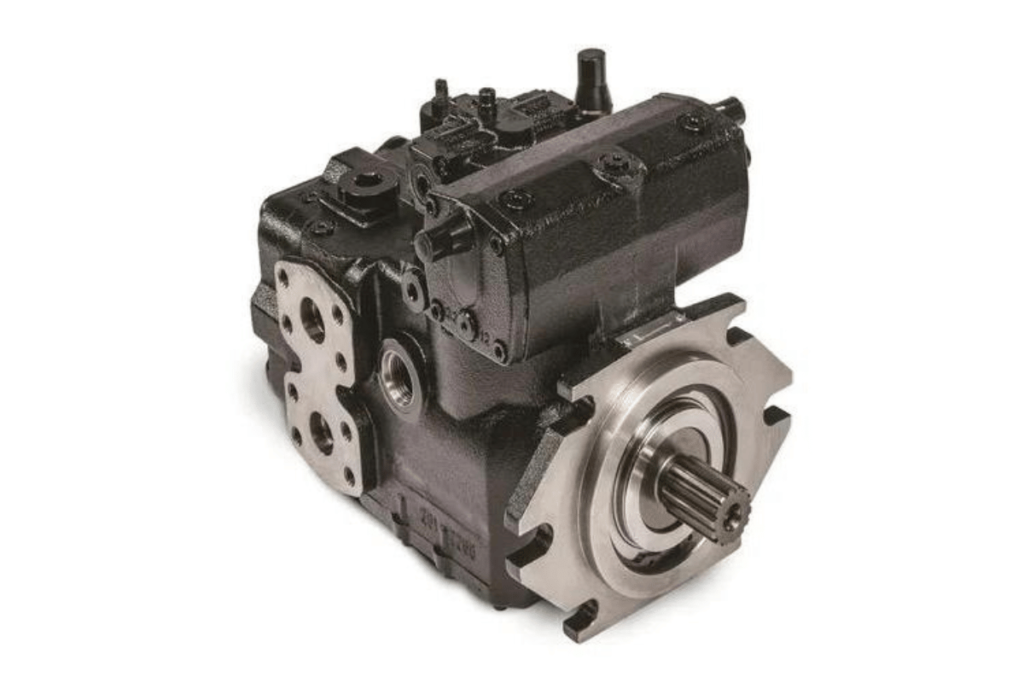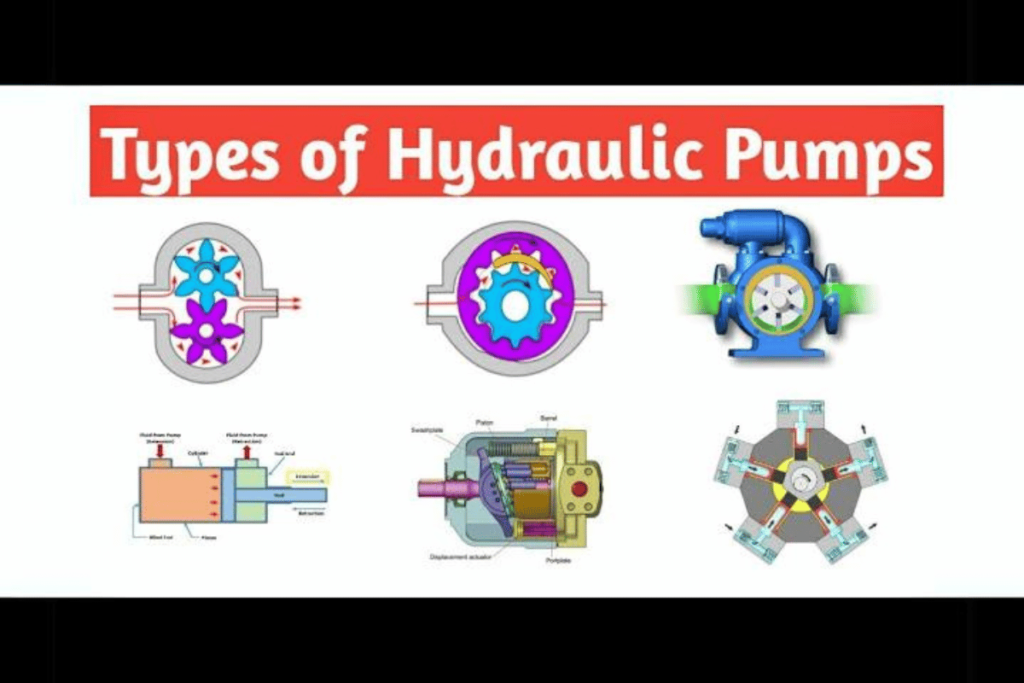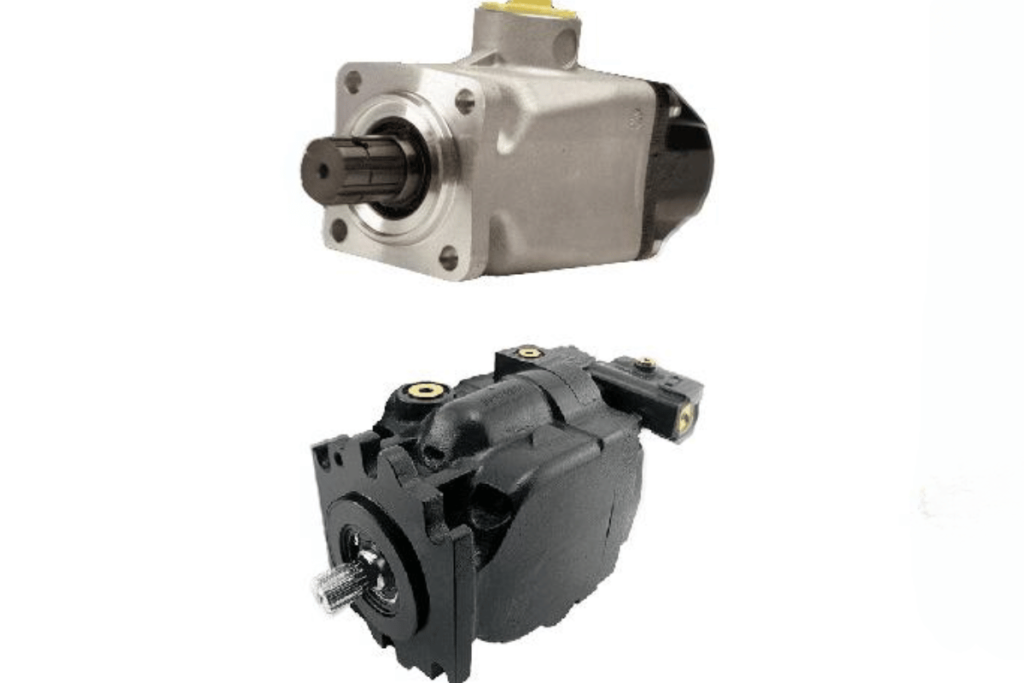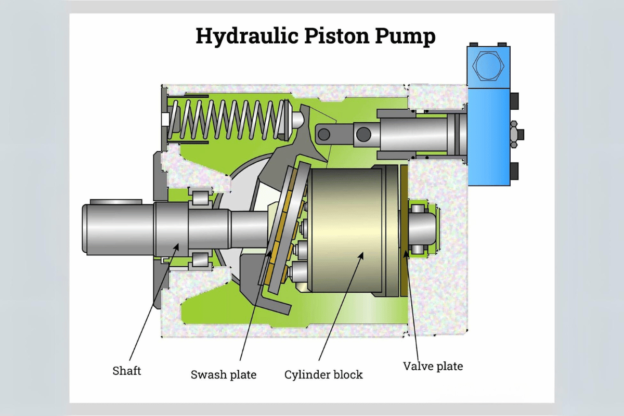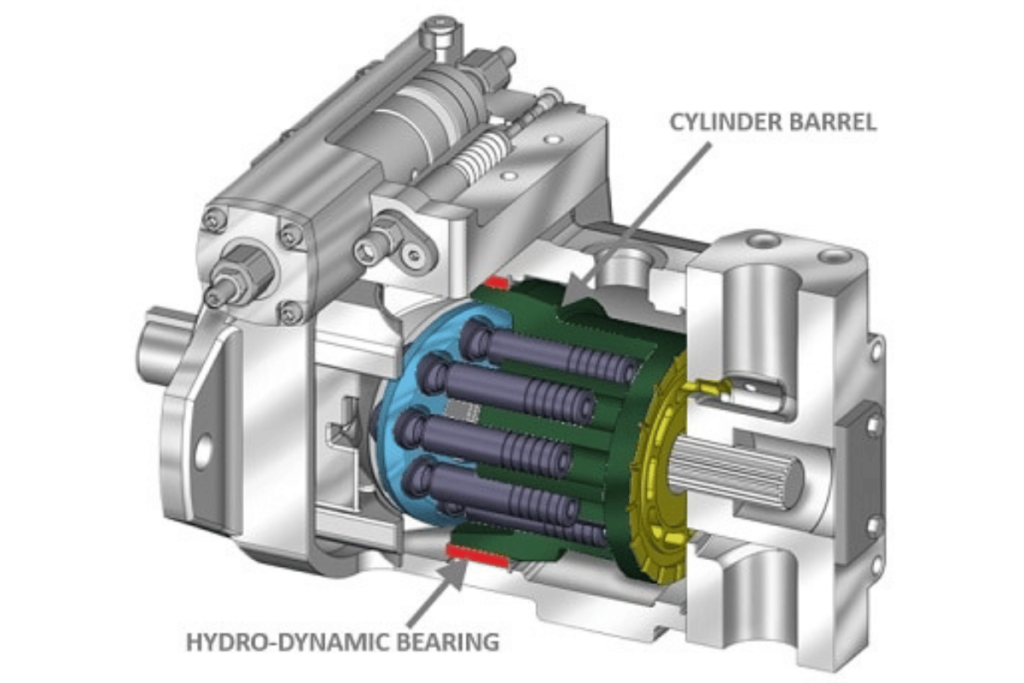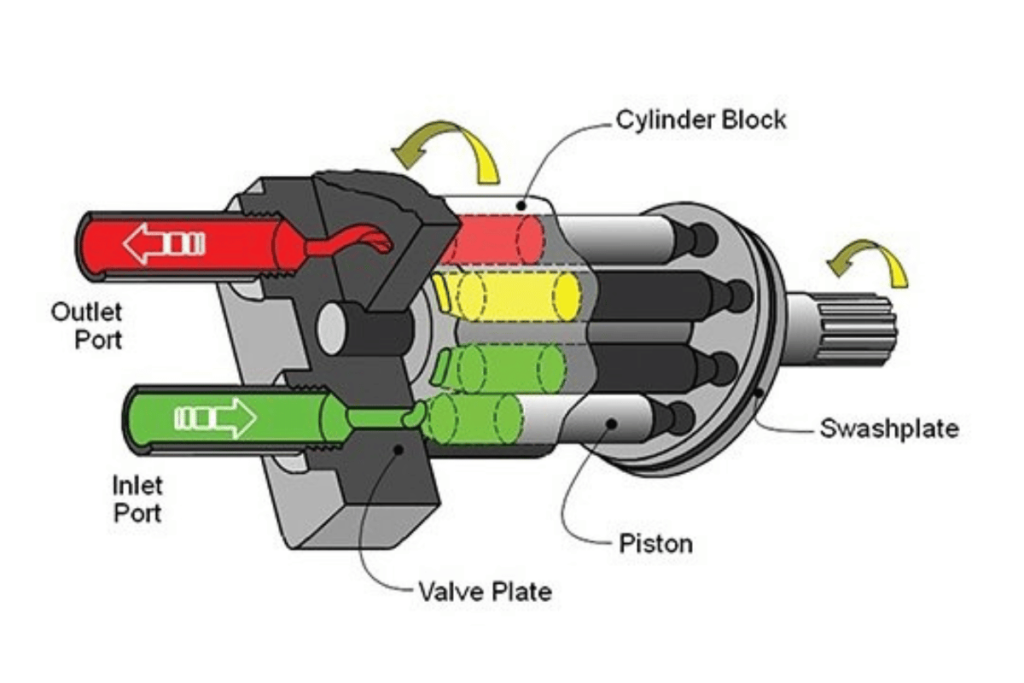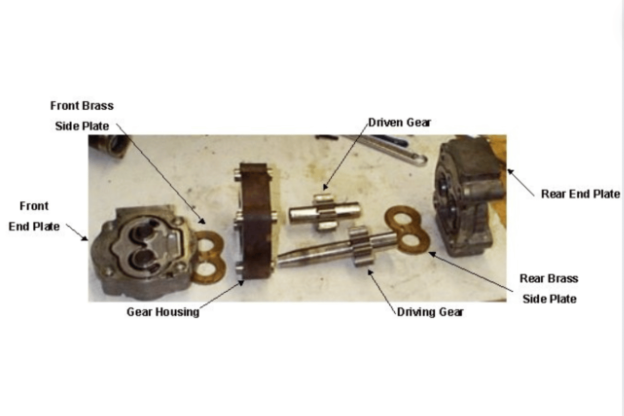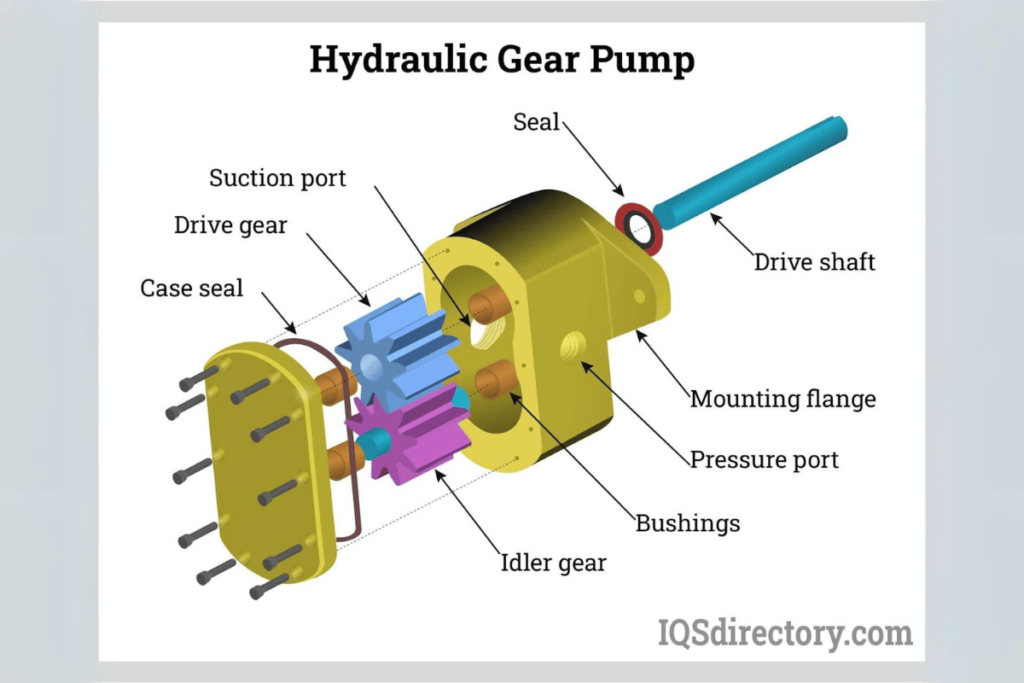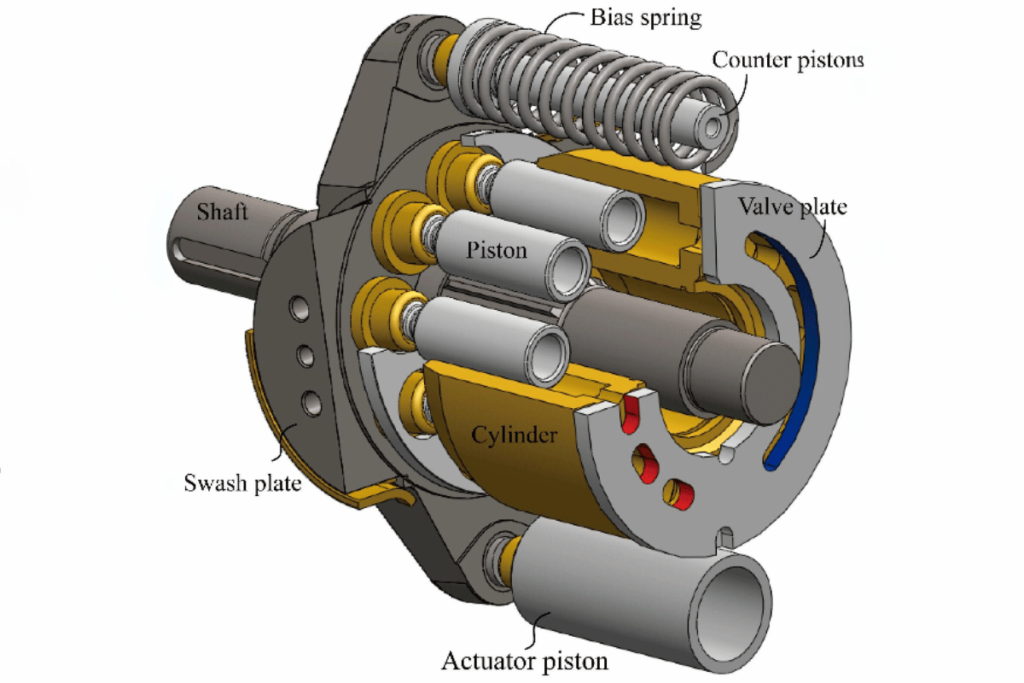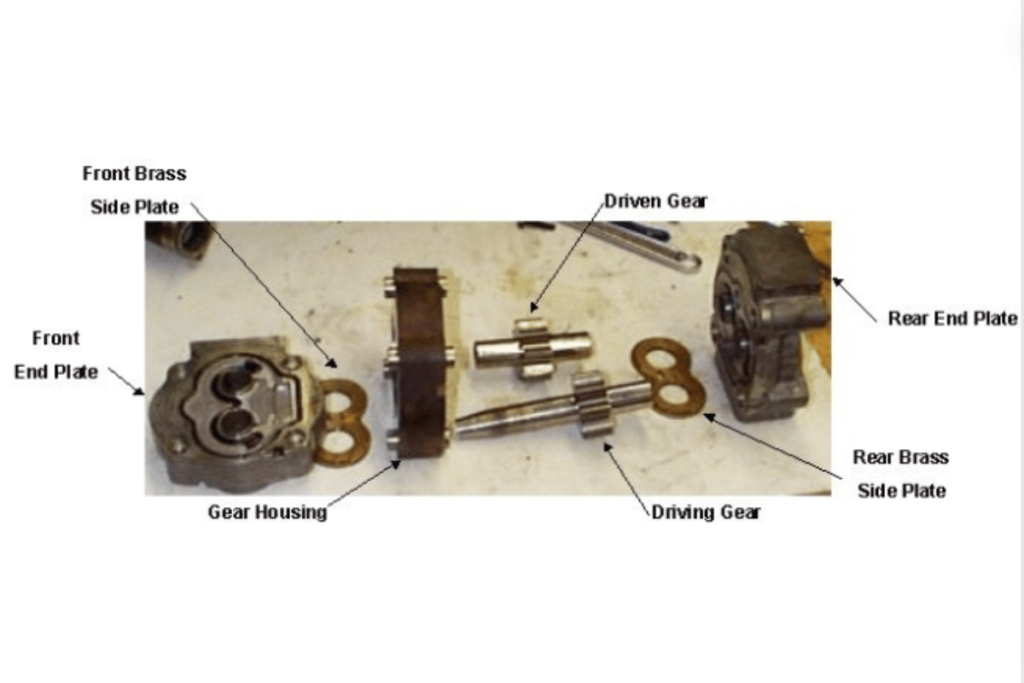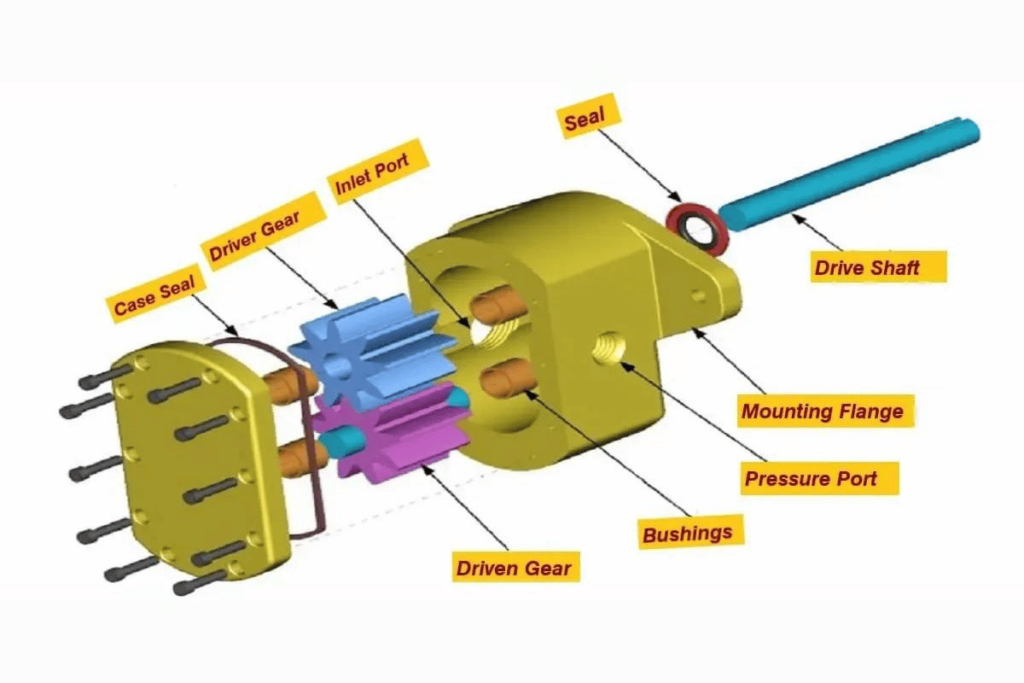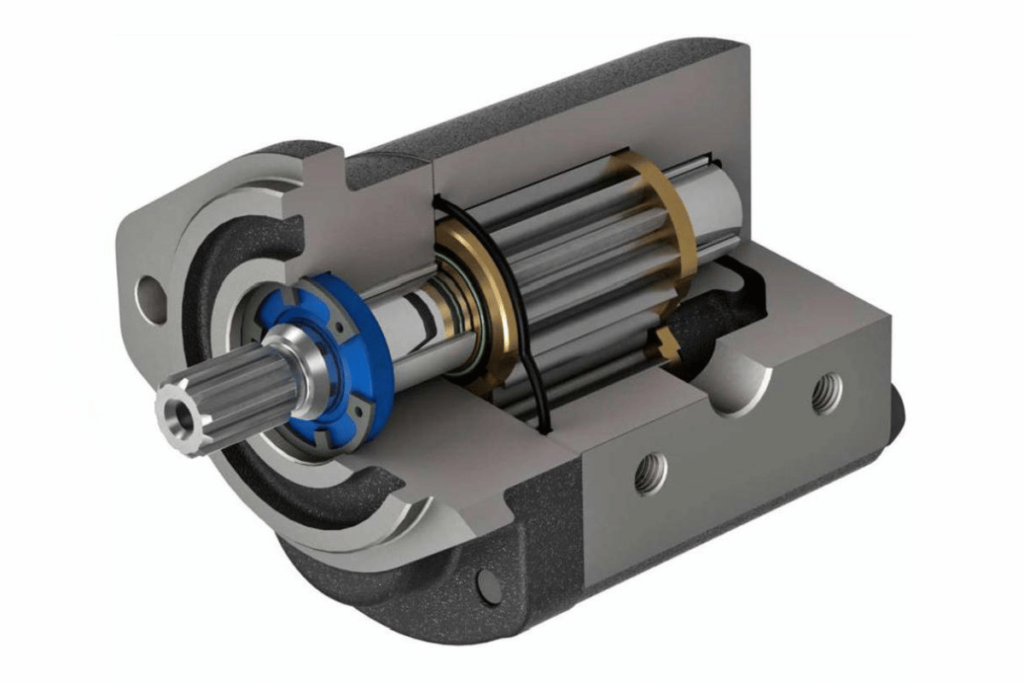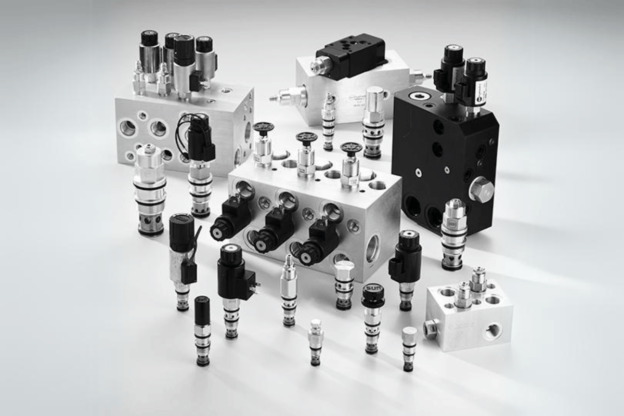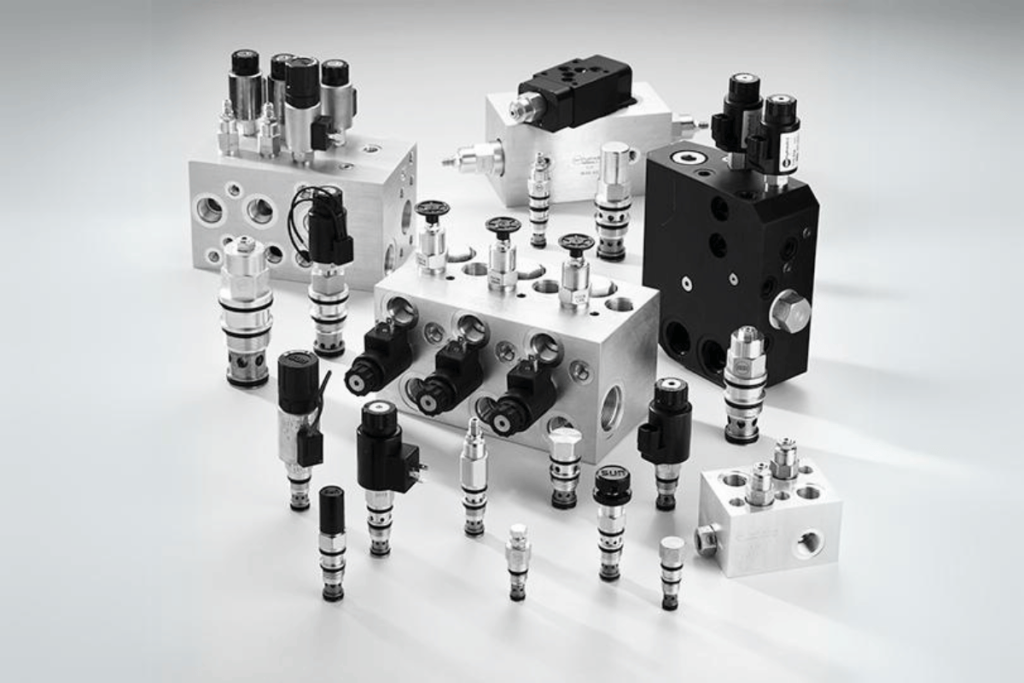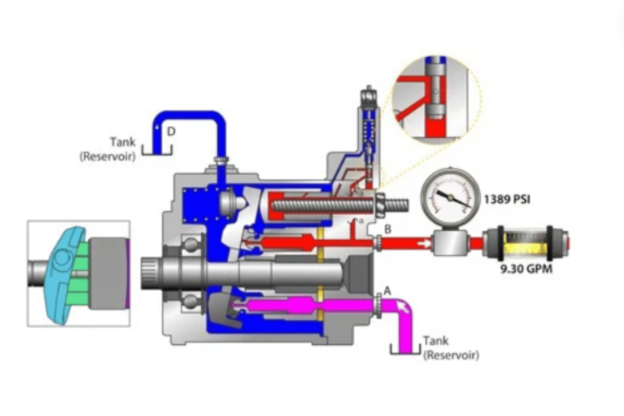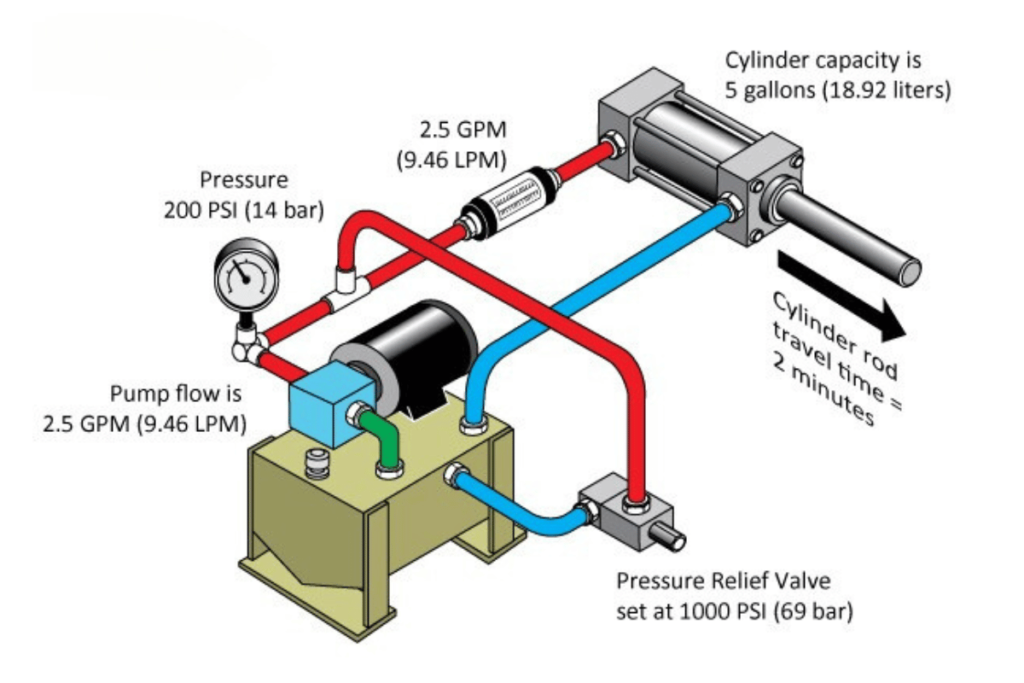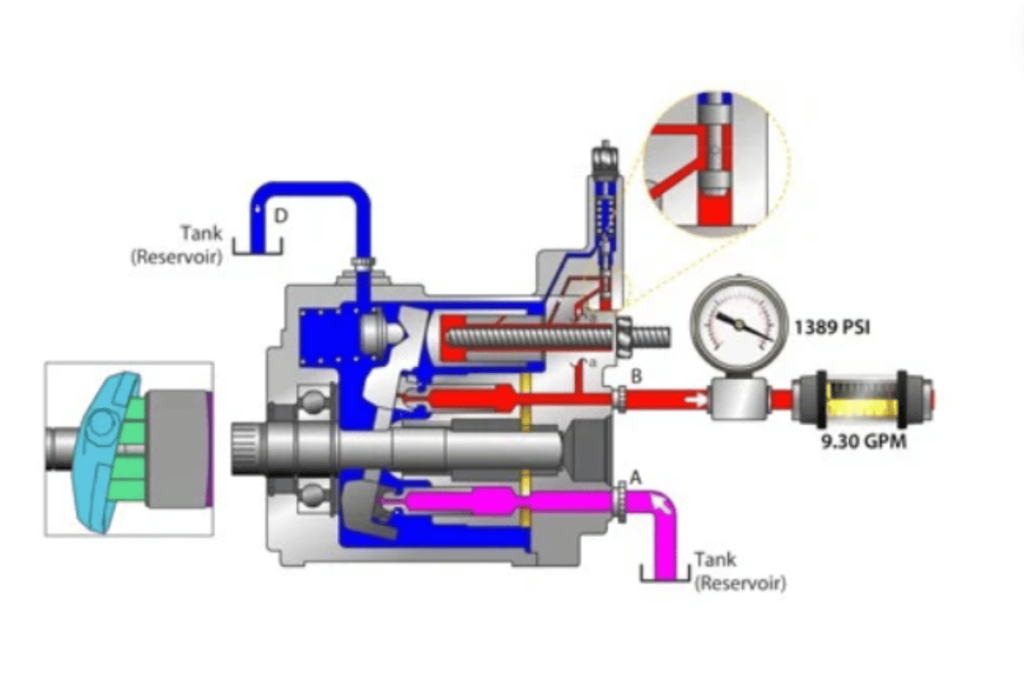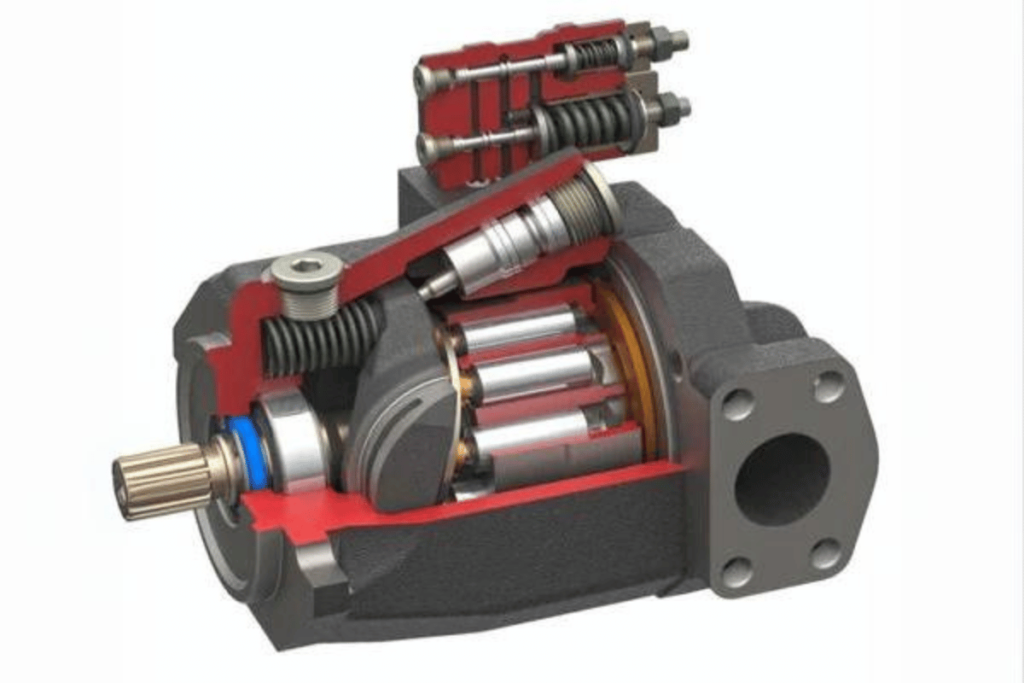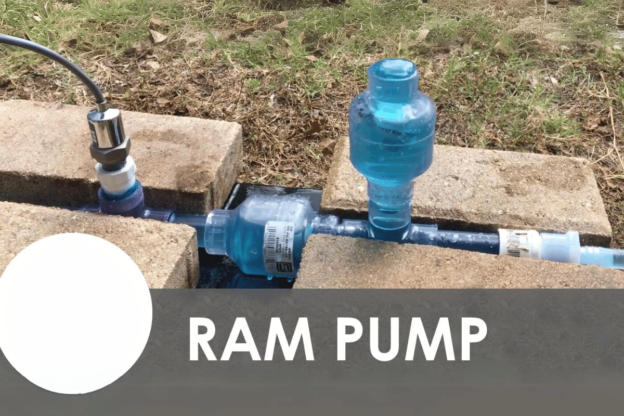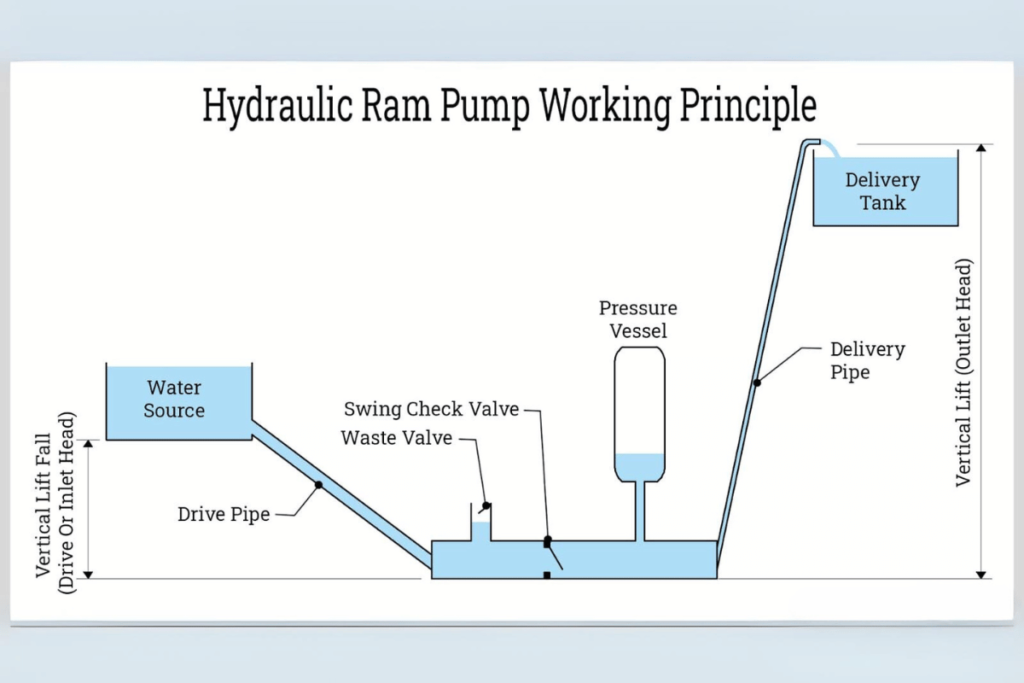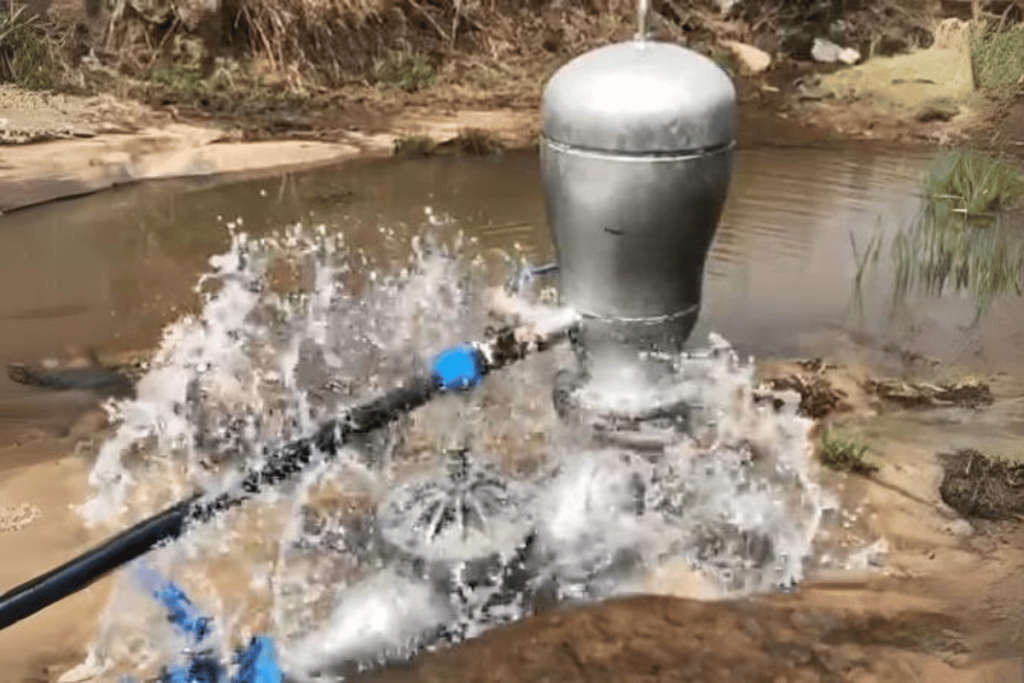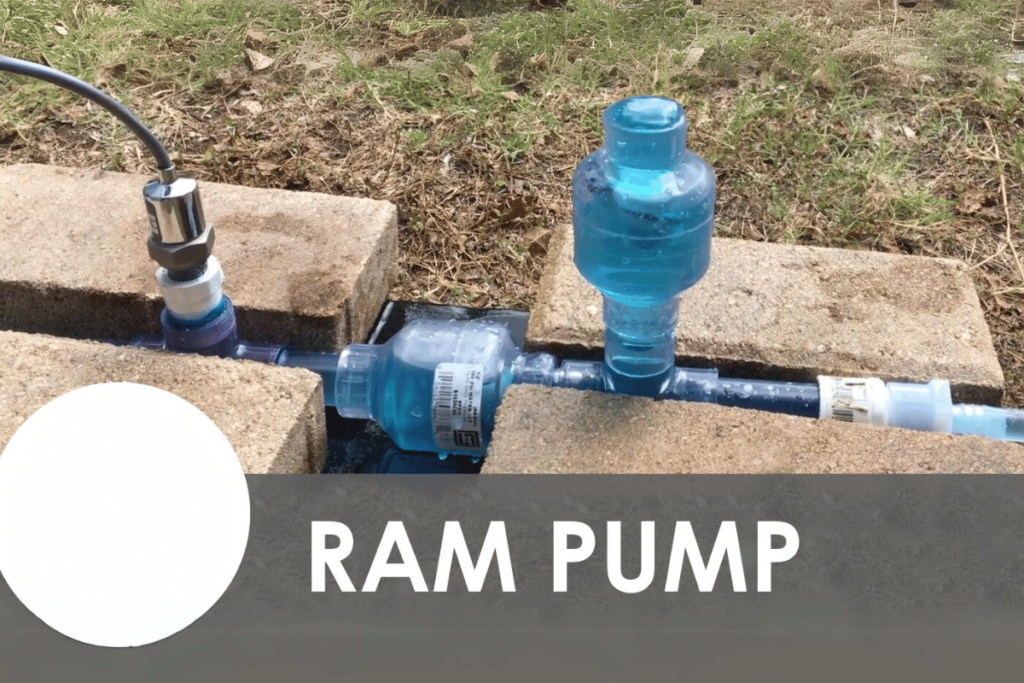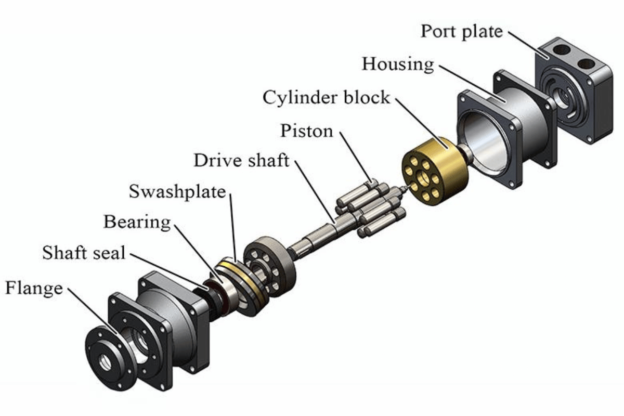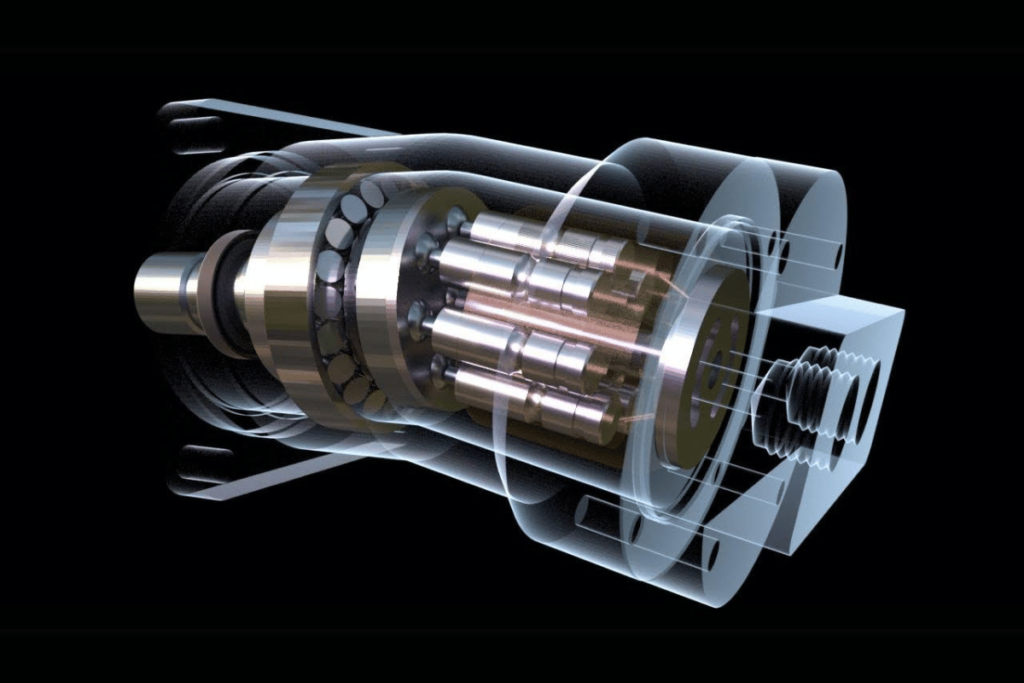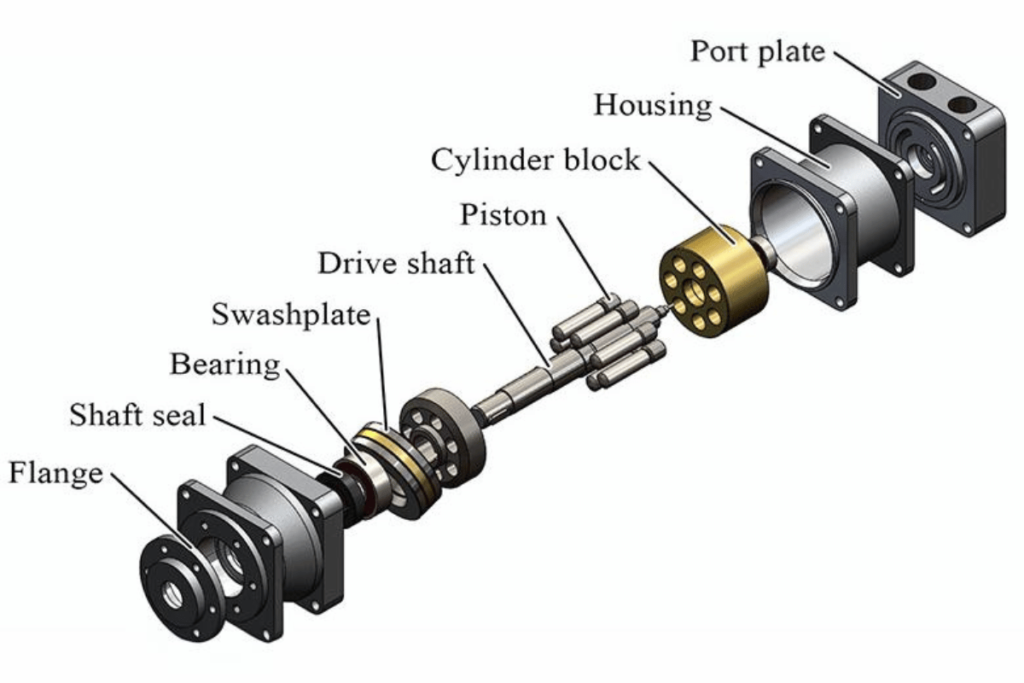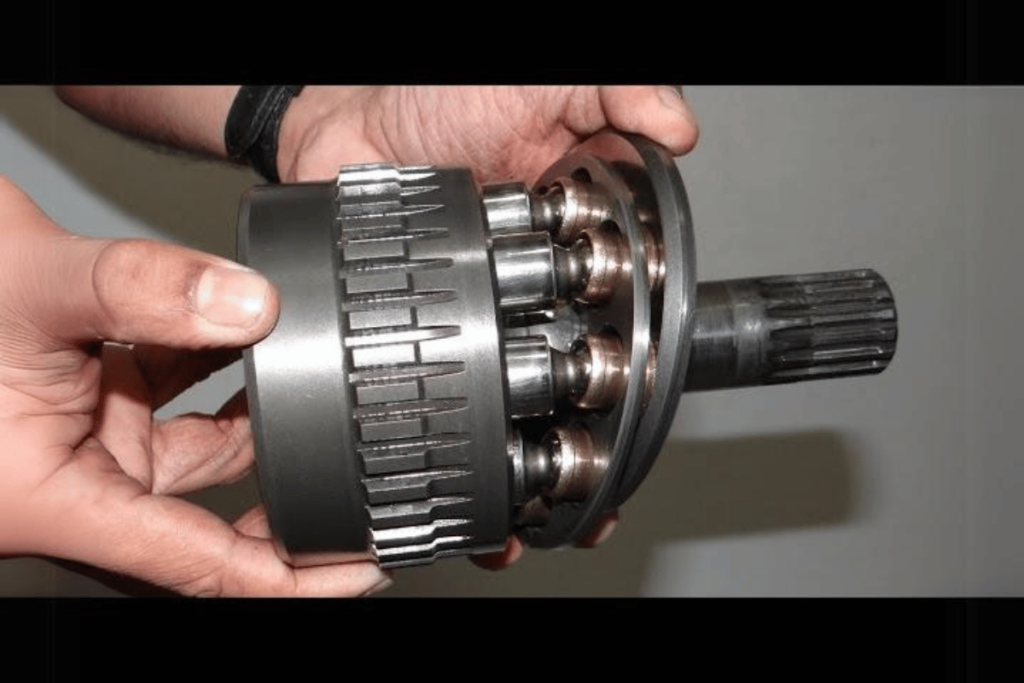Many machines and applications need hydraulic pumps to work correctly. They give enough power for systems to function well and be efficient. Adjusting hydraulic pressure on a pump is essential to ensure the best performance possible while preventing damage. In this post, we’re going over advice from professionals and techniques they use so that you can adjust your hydraulic pump safely and accurately too. Whether it’s years of experience or just starting out with hydraulics, knowing how these modifications are made will significantly increase the reliability and practical life of any machinery you may come across in future endeavors related to this subject matter area! With real-world examples given alongside step-by-step instructions; everything should become clear enough for even beginners who might lack confidence when faced against such challenges like hydraulic pressure adjustment themselves would indeed find necessary tools here!
What is a Hydraulic Pump and How Does it Work?
A hydraulic pump is a device that changes mechanical energy into liquid power by using the movement and force of fluid. These devices are necessary in hydraulic systems, which means they compress fluids to send power to different kind of actuators like motors or cylinders. Usually run by either electric motors or internal combustion engines (IC), these types of pumps create an empty space from which they draw off hydraulic fluid out of a tank. When in use, it then forces this same liquid into the closed system thus enabling control over speed as well as directionality while moving things. The potential energy contained within the liquid can be used for various tasks, including lifting heavy objects during construction work or driving machines at factories, among others. Therefore, anyone working in industries powered by hydraulics needs to know how these pumps function and their operational techniques.
Basic Functioning of a Hydraulic Pump
Hydraulic pumps are machines designed to convert mechanical energy into hydraulic energy through the movement of fluids, therefore producing force. Below, I will explain how they work and their basic principles.
- Common Types: Gear pumps, piston pumps, and vane pumps are three examples of commonly found hydraulic pump designs. Each one works differently – gear pumps use rotating gears; piston pumps employ reciprocating pistons; sliding vanes move the fluid in vane pumps.
- Pressure Creation: Pressure is produced in hydraulic pumps by transferring liquid from an area with low pressure to another with higher pressure. This generated force enables lifting heavy objects or moving loads around.
- Rate of Flow: Flow rate is expressed as litres per minute (L/min) or gallons per minute (GPM), and represents the volume of fluid that can be displaced by a pump during one unit time. More power may be needed for higher flow rates which can improve efficiency but not always necessary.
- Displacement: Displacement measures how much space within an object occupied by matter moves when acted upon by external forces such as heat or pressure changes. It is typically given in cubic centimeters (cc) or liters – this value shows what amount goes through each cycle of the machine thereby indicating capacity for applications where it might be used most suitably.
- Efficiency: Hydraulic pump efficiency varies depending on design factors and operating conditions under which they work best. How well input energy is converted into fluid flow is referred to as volumetric efficiency, while mechanical efficiency refers to parts where losses could occur due to frictional forces, among other things.
- Power Requirement: The power required for a hydraulic pump can be determined using the formula ( P = \frac{Q \times P}{600} ), where ( P ) stands for power in kilowatts; ( Q ) denotes flow rate measured in liters per minute; and ( P ) represents pressure measured in bars. Knowing power requirements aids in proper motor selection as well as system sizing.
- Temperature Range: Hydraulic systems work optimally when fluids are kept within certain temperature limits, usually 20°C to 60°C (68°F − 140°F). This is because efficiency decreases outside this range and such extremes could also cause damage.
- Suction & Discharge Conditions: Cavitation—a phenomenon that can lead to severe destruction if left unchecked—must be avoided by maintaining sufficient inlet conditions. Discharging should meet the requirements of the overall setup for effective functioning.
These considerations highlight the necessity of choosing an appropriate hydraulic pump for particular tasks so as to achieve maximum efficiency, dependability and safety in any given application involving hydraulics.
Critical Components of Hydraulic Pumps
Hydraulic pumps contain numerous elements that cooperate in order to convert mechanical energy into hydraulic energy. Comprehending these parts and their functions is crucial for effective pump operation. I will list the main components below:
- Pump Housing: The outer covering encompasses all inner constituents and maintains system integrity under operational pressures. The material selection and design should withstand an application’s specific pressure requirements.
- Drive Mechanism: Usually, an electric motor or an internal combustion engine provides the rotational power required for running a pump. The motor’s power output must match the pump’s power demand to achieve the best performance.
- Rotating Group: This includes the rotor, cam, or impeller (depending on the type of pump) responsible for creating fluid flow. The design used in this group directly influences a pump’s flow rate and displacement.
- Suction and Discharge Ports are openings through which fluids enter into or exit a pump. Proper sizing and positioning are essential for efficient fluid transfer while minimizing losses due to turbulence.
- Seals and Bearings: They prevent leakage and reduce friction, thereby improving efficiency as well as prolonging the life span of pumps. The material choice should be guided by the hydraulic fluid type and operating conditions.
- Control Valves: These regulate flow rate and pressure within the hydraulic system, thereby ensuring that a given pump does not exceed safe operation limits. System performance requires calibration of these valves.
- Filters: They play a vital role in removing contaminants from hydraulic fluid hence protecting pump parts against wear or damage caused by such particles. The selection of filters ought to be based on properties exhibited by the fluid being filtered plus the environment where it operates.
- Reservoir: It refers to storage tank for holding hydraulic fluids which supplies both pumps together with associated systems; size & design should make allowances for expansion/return flow rates exhibited by these fluids during use.
- Sensors and Gauges: Used for monitoring different operational parameters like pressure, temperature and fluid level etc., such instruments offer valuable insights that can prevent equipment failure.
- Cavitation Prevention Features: These are components like vortex inhibitors or special intake designs that help minimize cavitation risk, thereby safeguarding the pump against potential harm from vapor bubble formation.
Understanding these parts and their relation is crucial when selecting hydraulic pumps for different applications. Hydraulic systems ensure reliability and efficiency through the choice of materials, designs, and configurations based on operating conditions and expected performance parameters.
The Role of Hydraulic Systems
Hydraulic systems are used every day in many industries where power is transmitted and controlled using a fluid under pressure. Such systems can be found in construction, manufacturing, aviation as well as automotive applications among others. However, efficiency within hydraulic systems largely depends on some technical considerations which include:
- Pressure Rating – This refers to the safe working limit in pounds per square inch (psi) of a hydraulic system commonly ranging between 1500-3000 psi for standard systems while some high-pressure applications may exceed 5000 psi.
- Flow Rate—It indicates how much fluid can pass through the system and is measured in gallons per minute (GPM) or liters per minute (LPM). Typical flow rates vary across various industries, with industrial applications ranging from 10 to 50 GPM.
- Viscosity Of Hydraulic Fluid – It shows how thick or thin the liquid is usually measured in centistokes (cSt). The recommended viscosity range is between 15 – 68 cSt depending on temperature and application.
- Temperature Range—Hydraulic fluids work best within the temperature range of -20°F to 200°F (-29°C to 93°C), considering the type used and ambient conditions. This factor may affect the performance of the fluid itself and the overall efficiency of a system.
- Power-To-Weight Ratio—This ratio determines what amount of output power can be expected from a given weight, affecting design considerations for mobile units like excavators and lifts.
- Tolerance Levels: These indicate allowable deviations between different parts or connections that could affect reliability or performance; typically precision tolerances fall around 0.005″-0.010″ for critical components.
Considering these parameters allows professionals in any industry to select appropriate hydraulic systems for their specific operational needs, guaranteeing higher performance levels alongside durability. Consequently, closely examining these factors together with how various parts interact with each other within the system might lead to increased efficiencies, thus lowering operational costs.
How to Safely Adjust the Pressure on a Hydraulic Pump
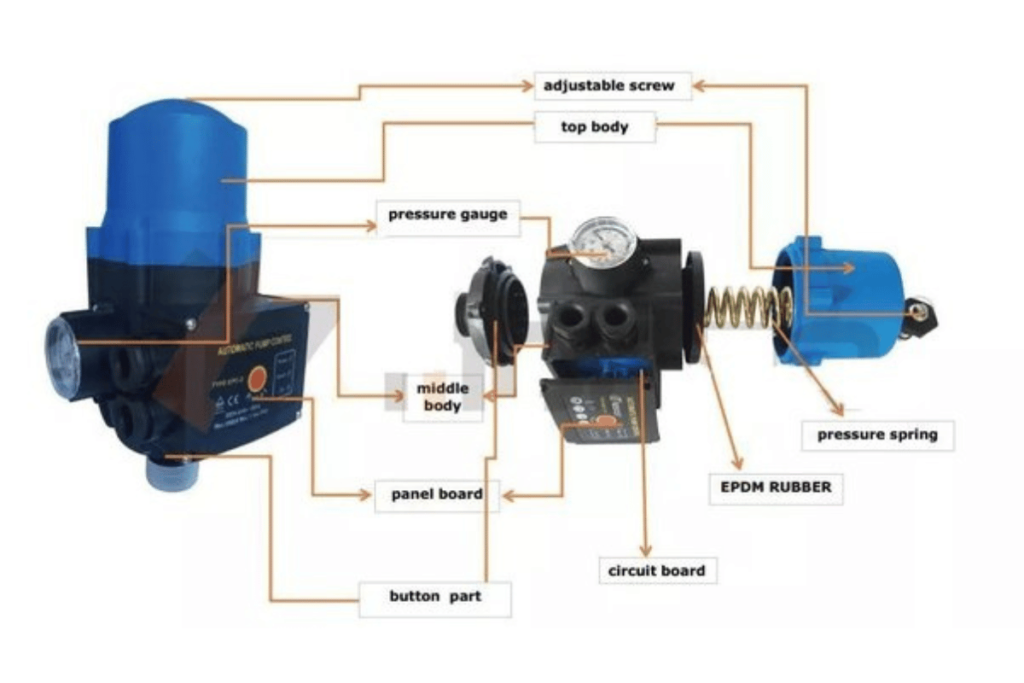
Altering the force on a hydraulic pump is an important operation that must be done carefully for safety and machine integrity. Here’s what you need to do:
- Operator’s Manual Review: Always read the operator’s manual of the specific hydraulic pump you’re using to learn how the manufacturer recommends adjusting pressures.
- Safety First: Prioritize your safety by wearing appropriate personal protective equipment (PPE) such as gloves and safety goggles. Clear the working area from any hazards.
- Switch Off the Machine: To prevent accidental activation, the hydraulic pump pressure should be adjusted only when the system is not running.
- Identify Pressure Adjustment Screw: You can see this valve or screw at some point on your pump; usually it has an indicator sign. This is what alters pressure settings.
- Get a Pressure Gauge: Fit a pressure gauge somewhere in line with your hydraulic system for accurate monitoring of pressure levels. This will enable better adjustment targeting.
- Gradual Modifications: Decrease or increase pressure slowly by turning adjustment screws – little adjustments are recommended so that you check every time not to overshoot desired pressure.
- Leaks Checkup: Once all changes have been made, look for any leakages around connections that may have been caused during the alteration process; fix them before using the machine further.
- Test Run: Restart your pump and watch the pressure gauge to confirm if it can maintain the desired levels under operational conditions.
- Record Amendments: Document all corrections made and why they were made; this keeps history of operations & provides future reference points
Following these steps will enable you to carry out a risk-free shift in force applied to a liquid transmitting device while ensuring the durability and trustworthiness of the equipment.
Preparation and Safety Precautions
Preparation and safety are the most critical aspects of hydraulic systems, and they must be prioritized. Here are some of the precautions you should take into consideration:
- Wearing Personal Protective Equipment (PPE): Put on necessary PPE like gloves, safety glasses or steel-toed boots in order to protect yourself from hydraulic fluid splashes and mechanical injuries.
- Knowledge and Competence: Hydraulic machines should only be operated by people who have been trained well enough to handle them; otherwise, they can cause a lot of harm. Safe adjustment requires one to read through the operating manuals of the machines to familiarize themselves with various parts that may require adjustment accordingly for safety reasons.
- Equipment Checkup: Before making any changes, always inspect all parts of a given system for mechanical problems, such as leaks, that arise from wear and tear over time.
- Organizing Workspace: One should keep their working area clean whenever dealing with anything, whether hydraulics or not. Clutter can easily lead to accidents especially slips and falls hence should be avoided at all costs.
- Emergency Measures: Understand how emergencies are handled; this includes shutting down systems fast enough plus accessing first aid if need be.
- Isolating Power Sources: Make sure power sources have been isolated before any adjustments are made where applicable, then lock machinery in an off position so that there is no chance of it getting activated without warning, thereby causing harm inadvertently.
- Relief Valves Setting: One should always wait until pressure has dropped entirely since immediate release could lead to self-inflicted injuries caused by sudden energy discharge.
- Effective Communication: When maintenance activities are carried out within teams, clear channels ought to exist that facilitate proper information sharing, thus averting misunderstandings between different parties involved.
By following these guidelines on preparation and safety, risks associated with working on hydraulic pumps will be reduced while operational efficiency will increase. Always remember that safety is an ongoing process that requires one to stay alert and follow best practices at all times.
Using a Pressure Relief Valve
In hydraulic systems, pressure relief valves are crucial for safety since they prevent the build-up of too much pressure. If the internal pressure goes beyond a predetermined threshold, this valve opens by itself, allowing fluid to escape, thus saving the system from possible damage. Below is a short review about pressure relief valves with information from different reliable sources:
1. Operations: The basic role of any PRV is to protect hydraulic systems from overpressure situations. This prevents failure of equipment and ensures security for operators.
2. Setting Parameters:
- Opening Pressure – The setting value for opening pressure should be determined correctly; usually given in psi (pounds per square inch) as stipulated by the system requirements.
- Flow Capacity—It must be able to handle the highest flow rates in gallons per minute (GPM) so that it can appropriately accommodate pressure spikes.
3. Types of Pressure Relief Valves:
- Spring–loaded Valves are commonly used, in which a spring holds the valve seat closed until system pressure exceeds spring tension.
- Pilot Operated Valves – They work with higher flows and use pressure from the system to pilot the opening and closing of this valve
4. Installation Guidelines
- Orientation: Ensure you install it vertically thus ensuring reliability in its operation.
- Close Proximity: Place it near the point where your pressures come from within your setup so as to reduce potential lag time during response due to changes in levels around different parts of an installation etcetera
5. Maintenance Recommendations: Such devices should be regularly checked by testing them periodically, even when not needed, to make sure that everything is working fine as expected. These things can wear out easily or fail without any warning signs displayed, which might greatly affect how well they perform their tasks.
Understanding technical parameters and operational principles related to these facilities may help improve safety standards while using hydraulic machinery. Always consult the manufacturer’s instructions whenever making adjustments or settings
Step-by-Step Guide to Adjusting Pump Pressure
The pump pressure needs to be adjusted to be successful and safe in hydraulic systems. Here are some steps that can be taken together with corresponding technical parameters taken from trusted sources:
- Recognize the Required Pressure: Identify the best working pressure by considering different system requirements and manufacturer specifications. Usually measured in psi (pounds per square inch), it should match the design parameters of your hydraulics.
- Find where the Pressure Adjustment Mechanism Located; Most pumps have a screw or knob used for adjusting pressures, this part can be located anywhere depending on type or model of a pump.
- Use Pressure Gauge: Before any changes are made, one must connect a calibrated pressure gauge. This will help you monitor the current level of pressure within the system and ensure that such data will aid in achieving the desired results after adjustment.
- Increase/Decrease Setting – Increase Pressure: This can be done by turning the adjustment mechanism clockwise to raise the working thresholds.- Decrease Pressure: Counterclockwise should be turned to lower those limits, but make sure you make slight adjustments at a time so as not to go beyond what was intended.
- Check for Leaks—After making an alteration, check for signs of leakages around connections (fittings) and joints (seals). A leak-free environment must always be maintained for safety reasons and performance enhancement purposes.
- Test The System—Once these changes have been effected, carry out a test run on the system at the new pressure setting and observe its behavior during operation.
- Record Changes—Document recorded observations about testing done and setting applied on pressures somewhere so that they may act as a future reference point while undertaking maintenance activities.
- Regular Review– Regularly review pump’s pressure levels by checking them against wear over time or any other alterations due shifts within needs of given systems.
Technical Parameters To Note:
- Setting Range – minimum-maximum ratings required by specific application
- Flow Rate – ensure compatibility between pump size vis–vis gallons per minute (GPM) required for particular systems.
- Temperature Considerations: Operating temperature ranges should be considered because extreme heat or cold can affect pressure readings and pump performance, too.
If you follow these steps carefully and consider the technical parameters, you will be able to adjust the pump pressure effectively to improve the performance and reliability of your hydraulic system.
Tools and Equipment Needed for Pressure Adjustments

Several tools and equipment must be collected before adjusting a hydraulic pump’s pressure effectively. Here are some of them:
- Pressure Gauge – A dependable gauge for accurately measuring the system’s pressure as modifications are being made.
- Wrenches and Socket Sets – These are required in order to loosen/tighten connections or adjust screws on the pump.
- Screwdrivers – Different types (flathead, Phillips) may be needed for various parts.
- Adjustment Tool(s) – Depending on its design there might be a special tool/wrench that is used specifically for it where you can adjust your screw about how much force should come out from this unit .
- Pliers – These can come in handy when you need to grip hoses tightly so they don’t move around while working with other parts
- Leak Detection Solution – Soap solution will help identify if there are any leaks at connections after making adjustments
- Safety Gear – Use gloves or wear goggles; personal protective equipment is important during all processes like these ones
- Hoses & Adapters – You might have to use some additional hoses or adapter fittings so everything fits together correctly with the pressure gauge
- Measuring Tape – It’s always good practice to carry one around just in case you need it for any measurements during setup or adjustment stages
- Documentation Tools – Have either a notebook or electronic device ready where changes made can be recorded too quickly, thus keeping records straightforward.
If all these things are readily available then adjusting pump pressure should not take much time but also keep up safety measures .
Pressure Gauge and Its Importance
A pressure gauge is necessary to measure the pressure in a hydraulic system accurately. It is essential to understand the pressure for many reasons:
1. Efficiency of the System: Energy-saving and peak performance are achieved when the hydraulic system maintains the right pressure.
2. Security: Too much pressure can cause equipment breakdowns and create dangerous situations like leaks or explosions; therefore, operators should be able to check their levels using this device since it allows them do so before any problem occur.
3. Proactive Maintenance: A hydraulic system can be checked often to detect areas where parts have worn out or failed to function properly. By using these readings, time can be saved by fixing things early enough instead of waiting until they break down completely.
4. Technical Parameters: Some of these include;
- Pressure Range: minimum and maximum pressures that may be measured accurately by a gauge, usually expressed in psi, bar, or Pa.
- Accuracy—how correct the indicated pressure is compared with the actual one, usually shown as a percentage of the full scale (e.g., ±1% FS).
- Connection Types – different thread sizes, such as 1/4″, 1/2″ among others, together with fitting types NPT or BSP, which determine the connection between this instrument and the hydraulic system being serviced.
- Material Compatibility – gauges should always be made from stainless steel if corrosive substances are going to pass through otherwise, they might get damaged easily due to chemical reaction caused by fluids involved during operation
In summary, without a doubt, those machines cannot work safely or efficiently unless controlled through sound monitoring systems, which prevent overloading them beyond given limits and also keep all other factors constant. For example, suppose we did not have these meters, what could happen? Clearly speaking everything will go haywire because nobody will know how much force is being generated at different points within the circuitry. Additionally, what if some parts wear out or fail? This statement implies that no maintenance activity would occur since no one can detect such failure signs beforehand until they manifest themselves, thus leading to the breakdown of all components connected as per design.
Types of Flow Control Valves
Flow control valves are essential parts of the hydraulic system which regulate fluid flow rate for maximum performance and efficiency. Here are some types of flow control valves and their main technical specifications:
1. Needle Valves:
- Function: It gives accurate control over flow due to its tapered shape.
- Pressure Range: Usually designed for moderate pressure applications up to 3000 psi.
- Connection Types: Available in different sizes (1/4”, 1/2”) with NPT or BSP connections.
2. Ball Valves:
- Function: It enables quick shut-off by rotating a ball within the valve to control flow.
- Pressure Range: Normally handles pressures up to 1500 psi.
- Accuracy: Very little leakage, typically rated at ±0.1% of flow rate.
3. Gate Valves:
- Function: Designed for on/off service rather than throttling; gate can be fully opened or closed.
- Pressure Range: Can withstand high pressures usually above 2000 psi.
- Material Compatibility: Often made from stainless steel or brass for corrosive environments.
4. Throttle Valves:
- Function: Intended for speed control by reducing the flow rate mechanically.
- Pressure Range: Effective in low-pressure to moderate-pressure systems.
- Technical Parameters: Frequently provided with means for adjusting flow restriction.
5. Check Valves:
- Function: Restricts backflow in a system by allowing flow in one direction only
- Pressure Range: Available for different systems, often up to 3000 psi
- Connection Types: Regular fittings are usually one inch or more extensive with NPT connections
6. Solenoid Valves:
- Function: They are electrically operated and used when precise flow control is required
- Pressure Range: Typically rated from 50 psi up to 150 psi
- Accuracy: Response times are typically less than 1 second providing fast controls
7. Flow Control Regulators:
- Function: Maintains constant preset flow despite pressure changes
- Pressure Range: Can handle pressures ranging between 5psi –150psi
- Accuracy: Flow stability within ±5% variance
8. Proportional Valves:
- Function: These valves provide flow or pressure control proportionally to input signals
- Pressure Range: Usually rated for systems up to 3000 psi
- Technical Parameters: They have hysteresis and linearity specifications for precise response.
9. Variable Orifice Valves:
- Function: Controls flow by adjusting orifice size
- Pressure Range : Versatile across various applications usually below 1500 psi
- Material Compatibility: Made with materials suitable for controlled media
10. Directional Control Valves:
- Function: Guides fluid movement within a system often with multiple flow paths available
- Pressure Range: Usually rated up to 3000 psi
- Connection Types: Typically, multiple ports can accommodate different fittings based on system design requirements.
Each valve performs a specific function in controlling the flow, and knowing these parameters is necessary when selecting hydraulic system valves for safety, efficiency, and reliability.
Other Essential Tools
Several other key tools should be used when working with hydraulic systems to improve performance and maintenance. The following instruments are commonly featured on the top ten websites with their specifications mentioned:
1. Gauges for measuring pressure:
- Function: They measure fluid pressure in a system.
- Pressure Range: Typically 0 – 6000 psi
- Accuracy: Normally ±1% of the full scale ensures accurate readings, which is crucial for the safety and integrity of the whole system.
2. Flow meters:
- Function: Used to determine flow rate of liquids or gases
- Flow range: Usually between 0.1-500 GPM though this can vary widely.
- Accuracy: Generally ±2% of reading required to keep desired flow rates constant.
3. Hydraulic hose assemblies:
- Function: Transmits hydraulic fluid within the system
- Pressure rating: Ranges from 3000 psi up to 6000 psi depending on application
- Temperature limits: Usually rated from -40°F through 212°F hence suitable for wide range environmental conditions .
4. Filtration systems:
- Function: They remove contaminants from hydraulic fluid.
- Filtration rating : Commonly stated as either 10 microns or finer so as to achieve optimum cleanliness levels for the liquid being used in this case oil would work best if it were clean enough .
- Flow rate: It can be anything between 5 GPM and over 100 GPM, depending on what the system needs at any given time.
5. Torque wrenches :
- Function: To ensure connections are appropriately tightened thus preventing leaks.
- Torque range: Normally between10 ft-lbs and150 ft-lbs depending on application needs
- Accuracy: Usually ±3% of setting necessary for achieving good seal integrity.
6. Seal kits :
- Function: Keeps hydraulic components sealed against leakage
- Material types: These include Nitrile, Viton , polyurethane etc chosen according to fluid compatibility and temperature requirements
- Pressure ratings: Must match maximum pressure within the system, which could be 3000 psi.
7. Hydraulic jacks:
- Function: They use hydraulic fluid pressure to lift heavy objects.
- Lift capacity: Typically rated between 2 tons -50 tons
- Stroke length: Varies but usually between 5”-12” for versatility when lifting various loads.
8. Pneumatic tools :
- Function: Employed where pneumatic power is advantageous
- Pressure rating: operates typically at about 90 –120 psi
- CFM requirements: Flow rates often needed range from 4-10 CFM depending on the tool.
9. Leak detectors :
- Function: Used to find leaks in hydraulic systems to keep them safe and efficient.
- Sensitivity: It usually detects gases as low as one part per billion, which is paramount when it comes to preventing catastrophic failures.
10. Maintenance software:
- Function: Monitor and maintain hydraulic system performance and scheduling
- Features: Uptime tracking, predictive maintenance alerts, fluid analysis capabilities for better overall reliability.
These tools if used together with appropriate technical parameters will ensure that hydraulic systems operate safely and efficiently. The correct selection and care of these instruments will improve any given system’s life expectancy and performance.
Tips for Maintaining Optimal Hydraulic Pump Pressure
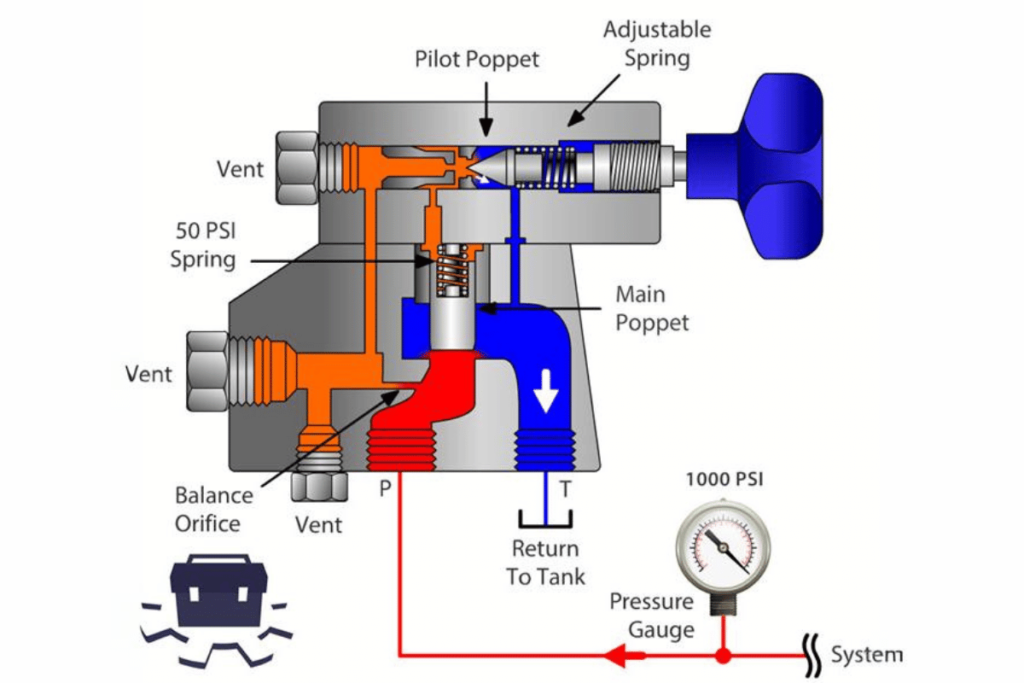
To keep your hydraulic pump at its best pressure, here are some suggestions:
- Inspect Components Often: Regularly inspect hoses, seals, and fittings for signs of wear or damage. Replacing broken parts can prevent loss of pressure.
- Fluid Level Monitoring: Monitor hydraulic fluid levels and ensure they stay within the range recommended by the manufacturer so that pressure remains steady.
- Clean up: The hydraulic fluid should be clean and free of dirt or other contaminants. Use appropriate filters to prevent debris from entering the pump and causing it to wear out.
- Find Leaks: Periodically perform leak tests on all systems; even small ones can drop pressure significantly over time.
- Pressure Setting Adjustment: Check pressures occasionally and adjust them as necessary for optimum performance based on operational requirements.
- Maintaining Proper Temperture: Ensure that hydraulic fluid is maintained at the correct operating temperature; overheating can lead to breakdowns and unreliable pressure readings.
- Regular Monitoring Of Pressure: Employ a system pressure monitoring device equipped with a gauge which should be checked often for any changes that could suggest problems within the system
- Stick With The Manufacturer’s Guidelines: Comply with service interval recommendations established by manufacturers and other maintenance instructions provided in their manuals to prevent premature failures.
- Only use Quality Fluids: Invest only in high-quality hydraulic fluids meant for your specific pump model which meet or exceed required specifications.
- Staff Training & Awareness Creation: Make sure everybody who operates any machine understands how best they can manage such systems without causing pressure problems due to misuse
With these tips, one can ensure their hydraulic system remains intact, thereby providing dependable service and extending the equipment’s life span.
Regular Inspection and Maintenance
To ensure that a hydraulic system lasts long and functions well, it is essential to have regular check-ups and servicing. Here are a few things you can do as supported by studies from different sources:
- Scheduled Inspections: These should be done every three to six months, depending on how much the system is being used and the environment under which it operates. They involve checking whether hydraulic fluid is needed and whether there are any worn-out hoses or leaks in connections related to fittings.
- Filter Replacement: Change filters within 500-2000 running hours or at least once per year as recommended by the manufacturer because dirty ones can rapidly increase contamination levels, thus reducing the whole system’s efficiency.
- Fluid Analysis: Ensure that routine fluid analysis tests are carried out to detect signs of contamination and decay early enough. The key parameters to be tested using ASTM methods should include particle count and moisture content, as well as viscosity, where hydraulic fluids generally require a minimum of 100 VI (Viscosity Index).
- Heat Exchanger Care: Check heat exchangers for blockages regularly and clean them accordingly. Overheating leads to fluid breakdown, which may fail; hence, it is necessary to always maintain a temperature between 40°C and 60°C (104°F 140°F) or thereabouts.
- Seal Integrity Check: Always inspect seals and o-rings frequently, mainly looking for wear signs. This will prevent fluid loss through leakage points, thereby reducing overall operational efficiency. Replace those showing fatigue symptoms immediately.
- Pressure Checks: Regularly measure pressure levels within the range stated by manufacturer during design like 1000 – 3000 PSI (Pounds per Square Inch) depending on application; otherwise any significant deviation could prove costly later on.
If records about maintenance activities are kept well, these steps will help improve the reliability of your hydraulic systems while also reducing risks.
Monitoring System Pressure
Monitoring the pressure of a system is necessary for hydraulic systems to work efficiently. It ensures that the system operates within prescribed limits thus preventing failures and maximizing performance. Here are things to consider about monitoring system pressure:
- Ranges of Operating Pressure: While this may vary depending on the application, most hydraulic systems work under 1000-3000 PSI. Continuously monitoring this bracket helps detect leakages or blockages at their initial stages.
- Gauges for measuring Pressure: Real-time monitoring requires the use of correct gauges that give true readings; hence, accuracy is paramount. Digital types with ±1% full-scale accuracy are preferred because they are more reliable.
- Alarms: Setting up alarm systems that alert when pressure goes beyond specific points can significantly reduce hazards. Normally, thresholds are put at 10% above or below normal operating pressures.
- Logging Data: Proactive maintenance strategies can be adopted if trends are identified through regular logging of pressures recorded over time. This involves noting fluctuations in pressure indicative of wear and tear on components.
- Reports on Maintenance: Frequent review and analysis of maintenance reports can help identify areas for improvement. Records indicating repetitive deviations from recommended pressures will show exact problems, such as failed seals or blocked lines.
- Environmental Considerations: Temperature and external loads among other environmental factors affect readings taken while measuring pressures. Therefore, hydraulic fluid should be kept at temperatures ranging from 40°C to 60°C (104°F-140°F) so that viscosity remains within operational limits for optimum performance.
Following these tips together with frequent checks will ensure reliability and efficiency in terms of energy utilization by the machines used in industries. This will lead to longer working lives and fewer breakdowns of such equipment, thereby reducing production losses caused by machine failure during the manufacturing process.
Addressing Pressure Fluctuations
To tackle pressure fluctuations in hydraulic systems adequately, we must identify common causes and apply appropriate remedies. Here are some things to consider based on what is currently believed to be best practice:
- Causes Identification: Pressure fluctuations may arise from different sources, such as problems with pump performance, valve failures, or leaks within the system itself. Conduct thorough examinations to determine the root cause.
- Pump Selection: Ensure that the size of the selected pump matches well with its intended application range. Operating beyond design limits could make it unstable i.e variable displacement pumps can dynamically vary flow rates to reduce pressure changes.
- Flow Control Valves: Use flow control valves strategically to efficiently manage fluid movement throughout the entire system. Sizing should always be carried out, taking into consideration the maximum flows required by a given setup, which are usually expressed in terms of GPM (gallons per minute) or LPM (litres per minute).
- Fluid Quality: Fluid cleanliness ought never to be overlooked. ISO cleanliness standards (e.g., ISO 4406) provide a basis upon which one can determine acceptable contaminant levels known to affect consistency in pressures.
- Accumulators Utilization: The incorporation of hydraulic accumulators assists greatly in dealing with pressure fluctuations. They should be sized and precharged according to operational needs, typically represented by bar/psi readings.
- System Layout: The layout of any given hydraulics system needs to be looked at critically so as not have too many bends or restrictions along the piping route because sharp turns induce turbulence which causes drops/spikes in pressure
- Monitoring Technologies: Advanced monitoring technologies, such as real-time pressure monitoring and feedback systems, help make instant corrections whenever deviations occur.
- Preventative Maintenance: Regular preventive maintenance checks are needed; hence, a schedule should be developed based on either hours worked or conditions observed, considering all necessary replacements after inspection.
Implementing these measures while closely watching how the equipment performs will help operators reduce their exposure to risks linked to pressure fluctuations within hydraulic systems, thereby guaranteeing efficiency and a prolonged life span of the equipment.
Frequently Asked Questions (FAQs)
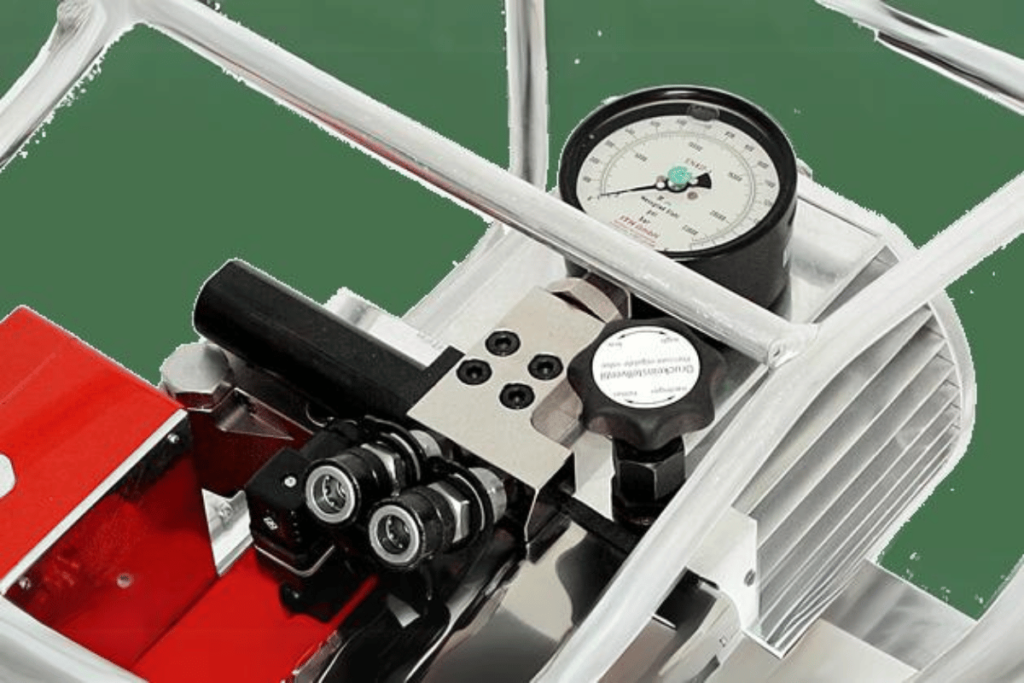
1. What causes pressure fluctuations in hydraulic systems?
Pressure fluctuations can result from several factors, including changes in fluid flow, temperature variations, leaks, or rapid changes in actuator speed. Proper system design and component selection are essential in minimizing these fluctuations.
2. How often should preventative maintenance be conducted on hydraulic systems?
Preventative maintenance should be scheduled based on operational hours or the system’s condition. Generally, regular inspections every 3 to 6 months are advisable to ensure that components function correctly and identify potential issues early.
3. What are the benefits of using hydraulic accumulators?
Hydraulic accumulators help absorb shocks, reduce pulsations, and maintain system pressure. By dampening pressure fluctuations, they enhance hydraulic systems’ efficiency and reliability.
4. How can I determine the appropriate size for flow control valves?
The appropriate size for flow control valves should be based on the system’s maximum flow rate requirements, typically calculated in gallons per minute (GPM) or liters per minute (LPM). Consulting with valve manufacturers or hydraulic system design specialists can also provide guidance.
5. What is the importance of fluid cleanliness in hydraulic systems?
Maintaining high fluid cleanliness is essential to prevent contamination that can lead to component wear, increased maintenance costs, and system failures. Adhering to ISO cleanliness standards can help ensure fluid quality and system longevity.

